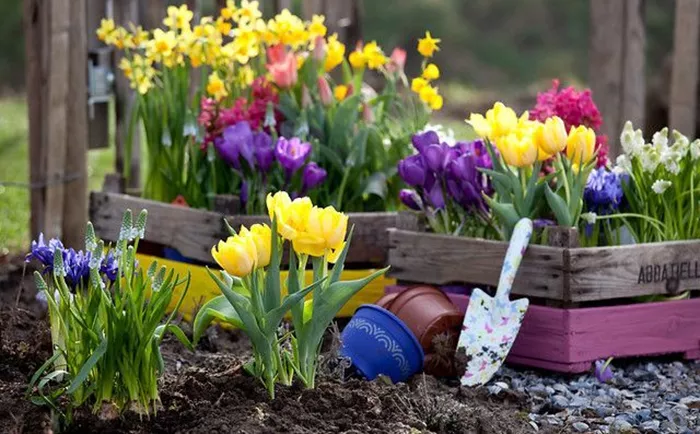When it comes to planting spring bulbs, many gardeners wonder whether it’s possible to plant them in the summer, or if there are any specific rules or limitations to follow. While most spring bulbs are typically planted in the fall, there are certain circumstances where planting them in the summer could be successful. This article will explore the question of whether you can plant spring bulbs in the summer, and provide some practical advice to help you make the best decisions for your garden.
Understanding Spring Bulbs and Their Growth Cycle
Before diving into the specifics of planting spring bulbs, it’s important to understand their growth cycle. Spring bulbs, like tulips, daffodils, and crocuses, are usually planted in the fall to allow them to go through a cold period known as vernalization. This cold treatment is essential for them to bloom the following spring. Typically, these bulbs will remain dormant during the winter, storing energy for their springtime growth.
However, some bulbs, particularly those that are not native to colder climates, may not need the winter cold and could be planted later in the year, including in the summer. The trick is understanding which bulbs are more flexible and how to provide the right growing conditions for them.
Can You Plant Spring Bulbs in the Summer?
The short answer is: yes, you can plant spring bulbs in the summer. However, there are important factors to consider before doing so. Bulbs that have been stored through the winter are generally intended to be planted in the fall, as this helps them undergo the cold treatment they need. When you plant bulbs in the summer, you need to ensure that they have the appropriate environment to grow, or they may not perform as well.
Why Summer Planting Might Be Challenging
Lack of Cold Period: Spring bulbs need a period of cold temperatures (often between 35°F to 45°F or 1°C to 7°C) for a specific number of weeks to trigger their flowering process. When you plant in the summer, you miss out on this natural cold period. Without this essential cold treatment, many spring bulbs will fail to bloom or will not grow as expected.
Summer Heat: Another challenge of planting spring bulbs in the summer is the warmer weather. Bulbs typically thrive in cooler temperatures, and the summer heat may cause the bulbs to rot before they have a chance to establish roots.
When Can You Plant Spring Bulbs in the Summer?
While it’s generally best to plant spring bulbs in the fall, there are exceptions. Some bulbs, such as lilies and gladiolus, are often planted in the summer for a different kind of flowering season. These bulbs, unlike traditional spring bulbs, don’t require a cold period to bloom and can be successfully planted in warmer months.
For traditional spring bulbs, like tulips and daffodils, there are a couple of ways to handle summer planting:
Pre-chilling Bulbs: If you missed the fall planting window, you can “pre-chill” your spring bulbs in the refrigerator for 6-8 weeks before planting them. This process mimics the winter cold they would have experienced naturally. After chilling, you can plant them in the ground, and they will still bloom the following spring, though the growth may be delayed compared to planting in the fall.
Indoor Planting: Another option is to plant your spring bulbs in pots or containers indoors during the summer. By controlling the temperature and providing proper care, you can simulate the necessary growing conditions. After the bulbs have undergone their chilling period indoors, they can be transferred outside in the fall or early spring, depending on your climate.
Tips for Successfully Planting Spring Bulbs in the Summer
If you’re determined to plant spring bulbs in the summer, there are a few things you can do to improve your chances of success:
Choose the Right Bulbs: Some bulbs are more forgiving when it comes to timing and temperature. As mentioned earlier, lilies and gladiolus can be planted in the summer and still do well. If you want to experiment with spring bulbs, consider choosing those that are more tolerant of warmer temperatures.
Pre-Chill the Bulbs: If you are planting traditional spring bulbs, like tulips or daffodils, consider placing them in the refrigerator for a few weeks before planting. This will provide the necessary cold treatment and encourage proper flowering.
Plant in Well-Draining Soil: To prevent the bulbs from rotting in the summer heat, make sure the soil is well-draining. Bulbs are susceptible to waterlogging, so creating the right soil environment is key to their success.
Water Carefully: While you want to keep the soil moist, be careful not to overwater, as this can cause the bulbs to rot. Water the bulbs sparingly and allow the soil to dry out between waterings.
Provide Shade: To protect the bulbs from excessive summer heat, consider planting them in a spot that receives partial shade, particularly in areas that experience very hot summers. This can help moderate the temperature and prevent the bulbs from overheating.
Consider Growing Indoors: As an alternative to outdoor planting, you could plant your bulbs in pots or containers indoors, where you can control the environment more easily. Once the bulbs have had their cold treatment and are ready to grow, you can move them outdoors to their final resting place.
Conclusion
While planting spring bulbs in the summer presents challenges, it is possible with the right preparation. By understanding the growth cycle of spring bulbs and taking steps to simulate the colder temperatures they need, you can still enjoy beautiful spring blooms—even if you miss the traditional fall planting window.
Whether you choose to pre-chill your bulbs, plant them in containers, or focus on summer-friendly options like lilies and gladiolus, the key is providing the proper care and environment for success. So, don’t be discouraged if you missed the fall planting season—there’s still time to plant spring bulbs and enjoy their beauty in the future!


